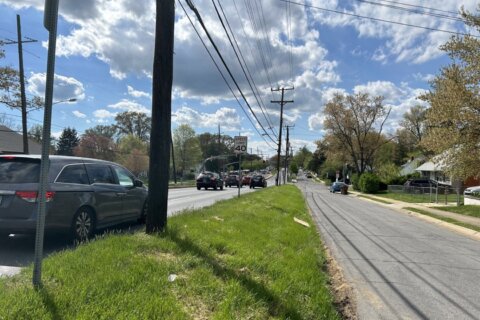Maryland’s most populated county is assembling a long-term development plan to oversee and guide Montgomery County for the next 30 years.
Named Thrive Montgomery 2050, the plan addresses many topics, including accommodating an aging population, racial disparities and the need for diverse housing.
The last time the county approved a long term plan was 1964, which saw the county transition from a largely rural area to one that serves as a home for over one million people.
Montgomery County continues to grow, albeit at a slower rate. It is expected to welcome 200,000 additional residents over the next 30 years — a population growth that will likely result in a demographic shift.
Likewise, Thrive Montgomery 2050 hopes to solve issues of racial disparities within the county. In 1990, people of color made up 28% of the population — a figure that now stands around 57%.
- Thrive Montgomery 2050 explainer
- Read the draft plan for Thrive Montgomery 2050
- Watch planning board meeting (public hearing starts at 4:33:56)
Neighborhoods in the county are largely separated along racial and economic lines. The plan calls for ethnic and racial minority communities to have more of a voice in the development process, and focuses on bolstering investment into minority communities.
It also calls for increased affordable housing in areas that have more “amenities,” such as job opportunities, shopping, schooling and public transportation.
The planning department foresees that the population of Montgomery County will get older over the next 30 years. It estimates 21% of the population will be 65 or older by 2045.
The plan calls attention to issues that stem from an older population, like the need for more social services. It highlights the benefits of downsizing homes from large family houses, to smaller houses or condos with better access to health care and other amenities.
Thrive Montgomery 2050 sees a need for a new housing mix. Currently one third of the county’s land is zoned for single-family homes. In 2018, only 26% of households were married couples with children. Fifty five percent were either people living alone or married couples with no children.
The plan suggests more smaller homes to address this trend. One strategy it suggests employing is the development of “corridors” composed of large roads with existing or planned rail and bus transit, such as Connecticut Avenue near Perry Avenue and Colesville Road near New Hampshire Avenue.
The county hopes to develop mixed-use buildings that will combine smaller housing with commercial space to provide a more walkable neighborhood.
The planning department will accept written public comments about Thrive Montgomery 2050 until Dec. 10 and will hold numerous work sessions in January and February. The county council will then review Thrive Montgomery 2050 in April. Written comments can be emailed to Planning Board Chair Casey Anderson at mcp-chair@mncppc-mc.org.








